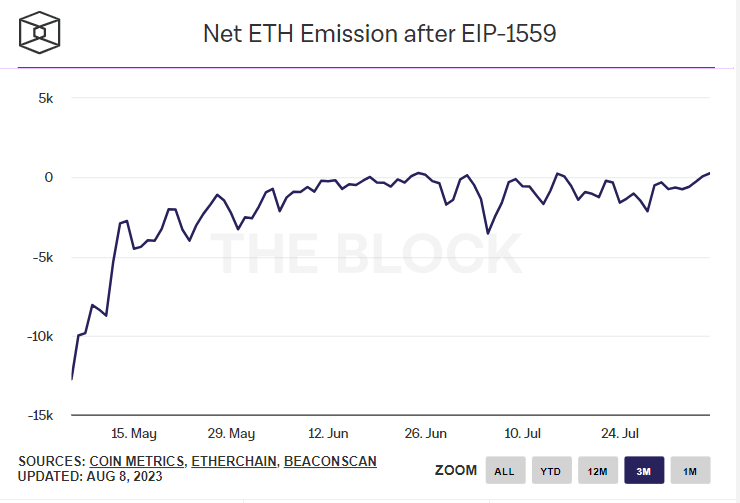Ethereum, the second-largest cryptocurrency by market capitalization, has gained significant attention for its potential to revolutionize finance, supply chains, and digital art through its smart contract capabilities.
Energy consumption is just one part of crypto’s environmental problems. ETH and other blockchain networks have been criticized for their computational inefficiencies, which can lead to the need for increased energy consumption.
To address this, ETH reduced its carbon emissions by more than 99% in a short period. This achievement resulted from implementing various measures to improve the energy efficiency of the Ethereum network.
However, a recent analysis by BitcoinCasinos.com reveals a startling increase of 101% in ETH’S net emissions over the last three months. This increase is largely attributed to the increasing activity of Ethereum users leading to a sudden growth in energy consumption.
BitcoinCasinos financial analyst Edith Reads commented on the findings, “The increased energy consumption associated with ETH transactions raises serious questions about the sustainability of blockchain networks and cryptocurrency as a whole. To ensure that crypto can continue to become an accepted form of payment without causing any damage to the environment, developers need to continue exploring ways of reducing energy consumption.”
The Path to Green Crypto
The recent rise in Ethereum’s net emissions does not take away the fact that it has made remarkable progress in terms of energy efficiency. The Merge, which turned it from a proof-of-work blockchain into a proof-of-stake blockchain, was monumental.
Before the upgrades, Ethereum’s estimated annual CO2 emissions exceeded 11 million tons. But after successful optimizations and the integration of PoS, the carbon emissions have dropped to under 870 tonnes, less than 0.1% of global electricity consumption.
As more cryptocurrencies move towards renewable energy sources, ETH’s carbon footprint is expected to continue decreasing in the coming years. This will be a major step forward for environmental sustainability within the crypto industry and enable us to transition into green digital currencies.
What’s New in The Recent Ethereum Upgrade?
Ethereum’s rise in emissions over the past three months is alarming and could have long-term implications for the sustainability of blockchain networks. This emphasizes the importance of exploring efficient solutions that enable us to reduce energy consumption and protect our environment from further damage. The Dencun upgrade, scheduled to launch soon, will be instrumental in achieving this goal.
The coming update promises to reduce transaction fees on ETH’s blockchain and increase its throughput, making it faster and cheaper for users to send funds across the network. These changes will help ensure the Ethereum network remains a safe, secure, and sustainable alternative to other digital currencies.

